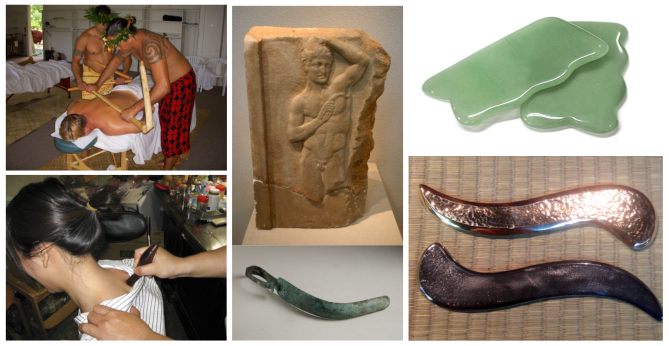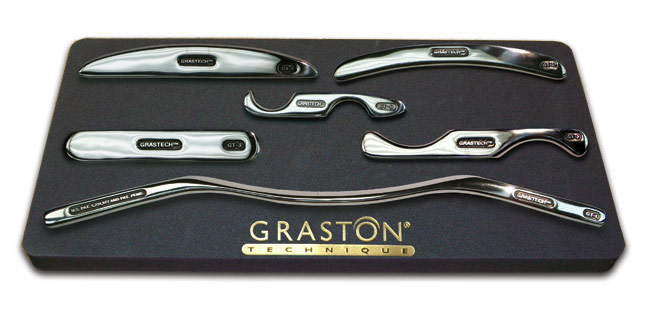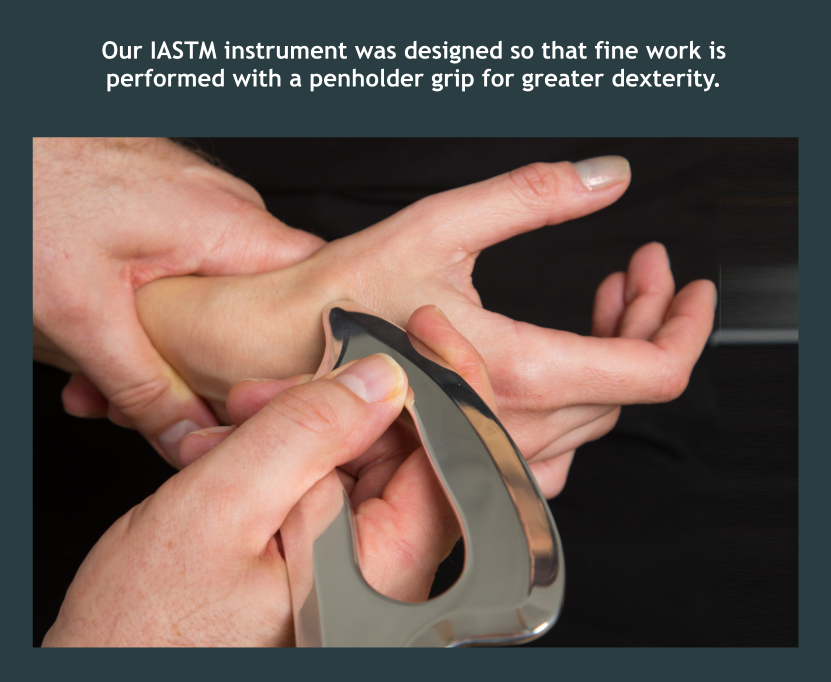IASTM HISTORY
IASTM (Instrument Assisted Soft Tissue Mobilisation) tools have been used in various guises throughout history by different cultures to facilitate a return of normal skin and tissue integrity.
The ancient Egyptians and people of Mesopotania used tools called Staves or Strigils made of bone, horn and metal to cleanse and massage the skin. Later, the ancient Greeks and Romans also used Strigils to scrape the skin and relax the muscles. A massage oil was applied to prevent skin irritation. Massage using wooden implements “Lomi Massage” is used in Hawaii to improve blood circulation and lymph flow, eliminate of toxic waste and relieve body pain.
A form of IASTM known as Gua sha (gua = “to scrape or scratch,” sha = loosely translated as “disease”) has its origins in ancient China. Gua Sha treatments consist of using traditional tools such as portions of water buffalo horns or shaped pieces of jade and other stones to rub over oiled skin.
The primary goal is to produce a warming reaction to bring “sha” to the surface, so it leaves the body. This is done by causing extravasation of blood from the peripheral capillaries causing the formation of petichae on the skin. Chinese medicine believes that the movement of stagnant blood is therapeutic.

Graston Technique
The modern IASTM treatment was originally developed by David Graston, who established the “Graston technique”. It’s concept was grounded in the works of English orthopedist James Cyriax and the rationale of cross fiber treatment. He designed a set of 6 instruments of various shapes to fit different body areas.
A specially designed lubricant is applied to the skin prior to utilizing the instruments. The lubricant allows the instruments to glide over the skin without causing irritation. The treatment edge of the Graston instruments and other IASTM instruments provide unique feedback from the tissues, which would otherwise be difficult to feel only using your hands.
Tissue adhesions can be felt and treated with these instruments which provide improved precision in the treatment of myofascial restrictions and fibrotic/scar tissue. In recent years some manufacturers have developed multi-tools for IASTM, one instrument/tool that has 5 or 6 different edges which is more practical than using a set of different instruments.

IASTM Multitools.
In recent years manufacturers have realised that you do not need a whole set of tools / instruments for IASTM and have started producing multi-tools. These are tools with multiple edges that can each be used on different areas of the body. They are easier and quicker to use and if ergonomically well designed can be a great asset to the practitioner and patient alike. The great advantage of using our instruments is their ease of use as they were designed as the myofascial correction protocols were being developed.
Myofascial Correction and IASTM
The Myofascial Correction™ system is a very effective method of treating the myofascial system primarily using instrumented treatment protocols. It uses two specially designed instruments, a Myofascial release instrument together with an IASTM instrument. These instruments have been created from an ergonomic perspective, that is their function determining their form. Please visit our instrument design page to see a video explaining our IASTM instruments unique design and ergonomics.

